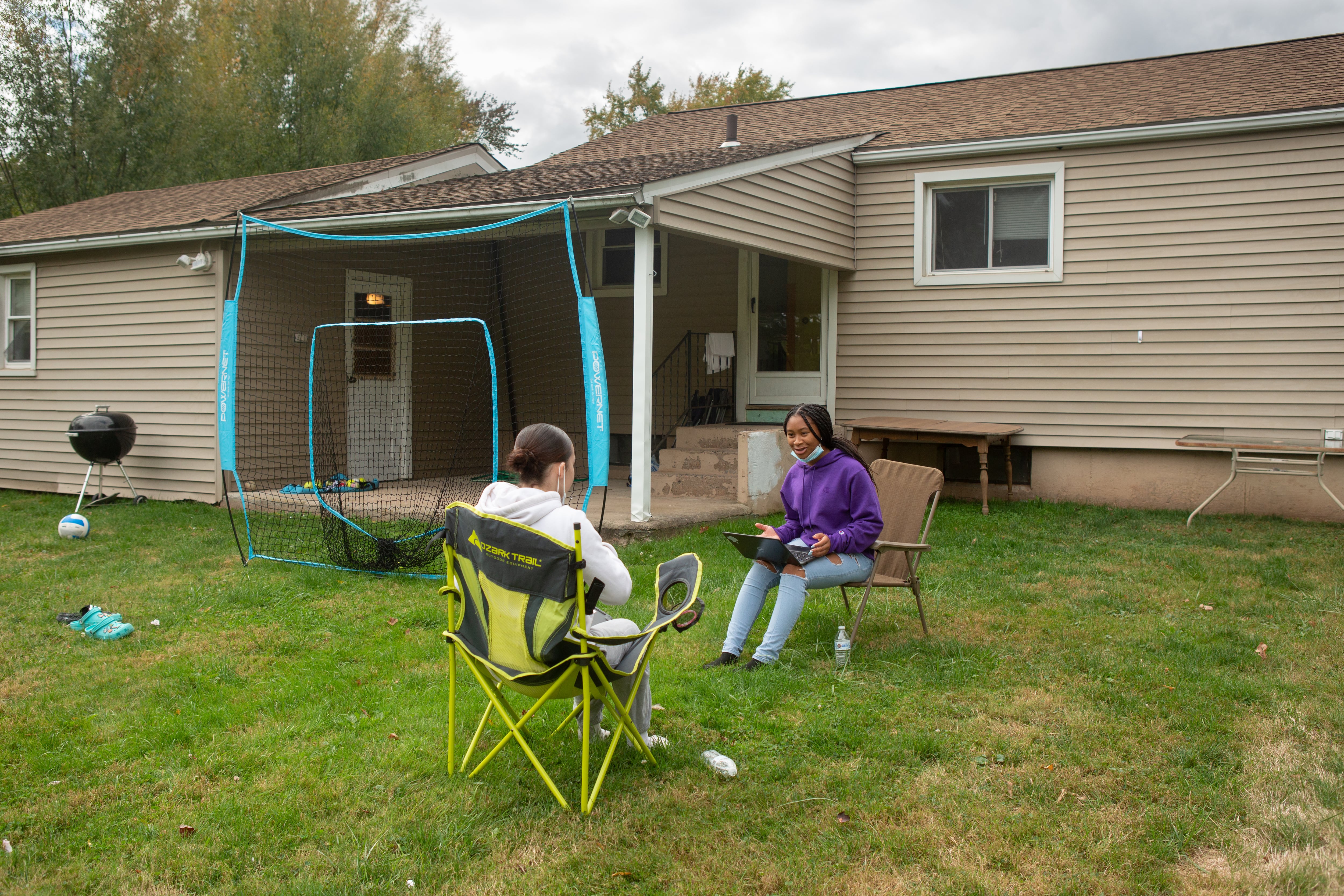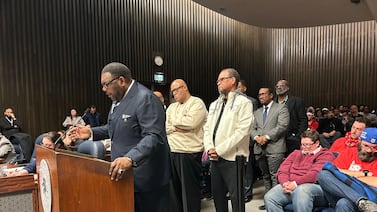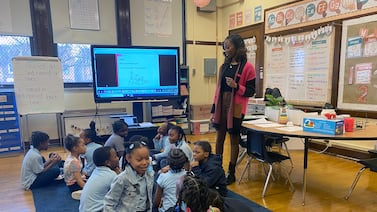In-person schooling is back across the country this school year, but fewer students than normal are regularly attending class, according to data emerging from states and school districts.
Statewide daily attendance in Illinois, for instance, is 92.5% so far this year, compared to 93.9% in 2018-19, the last year unaffected by the pandemic. In Connecticut, 93.5% of students have been present on a typical day, compared to 94.8% pre-pandemic.
Many districts have also reported a spike in the share of students on track to be “chronically absent.” In Portland, Maine, that figure is currently 20.4%, compared to 13.4% in 2019-20. In Detroit it jumped from an already-high 45% to 59%. And in Oakland, nearly a third of students are on track to be chronically absent, up from 17% two years ago.
The attendance declines likely reflect COVID-related quarantines, new pressure to keep children home at the first sign of illness, and a slew of other challenges unique to this school year. Regardless of the cause, and even though the data only reflects a period of a few months, the rise means more students are missing out on instruction after many fell behind last year.
“When you miss school at the beginning of the year, it has consequences for learning,” said Hedy Chang, executive director of the nonprofit Attendance Works. “But also the beginning of the school year is when you’re building relationships to peers and building relationships to teachers.”
This school year started with a flurry of quarantines as the delta variant spread across the country. Quarantine policies vary, and some schools have relaxed their rules as the year has gone on, but it’s clear that many students have missed school for this reason.
Lengthy quarantines could be particularly likely to contribute to increases in students at risk of being chronically absent, typically defined as missing 10% of the school year. (Where data has been reported on chronic absenteeism this year, it refers to students who are on pace to be chronically absent, by missing, for instance, at least four of the first 40 school days.)
Districts vary in how they’re calculating attendance for students who are quarantined, with some marking students present if they do school work while at home.
In Nashville schools, for instance, 38% of students were on track to be chronically absent after 50 days of school. But students who are quarantined can be counted as present if their parents submit forms saying they continued to learn from home. “Those numbers will go down, most likely, once the schools get those forms back,” a district spokesperson told Main Street Nashville.
In Oakland, quarantined students can be counted present through an “independent study” program — but the onus is on already strapped schools to offer that option. “We want it to be a common practice, but also know that our support for that is not allowing it to be a common practice,” said Misha Karigaca, the district’s director of student support and safety.
Where students are counted as present when quarantined, official attendance figures understate what share of students are getting a full day of learning. Research — and the recent experience of widespread remote learning — suggests that students learn more when in person.
Family decisions about when to keep a student home may also be a major factor. Instead of sending a kid with a runny nose into school, parents may be quicker to hold their child out of class, consistent with guidance from the Centers for Disease Control and Prevention and local school rules.
“What’s our messaging around attendance? Before the pandemic it was: you come to school even if you have a runny nose, even if you’re not quite feeling well,” said Karigaca. “This is actually quite the opposite of that.” Oakland requires students with any symptoms of illness to get a negative COVID test and be symptom-free for 24 hours. That can keep students out of school for multiple days.
“One quarantine or one symptom can have you on a chronic-absence list,” he said.
Another explanation for declining attendance figures is that schools, teachers, and students are facing a cascading set of challenges that have created a negative school climate, making students less enthusiastic to be there.
Teacher stress has spiked amid substitute shortages and added responsibilities. COVID precautions, including masking and distancing, may make it harder to form relationships with peers and teachers — an important factor in attendance. And many children hadn’t been in school for over a year, and have struggled to adjust.
“There are kids in eighth grade this year who didn’t get a full sixth grade and no seventh grade in school and we are asking them to be leaders in their school. Or kids who didn’t get a full ninth grade and 10th grade in school and now are in 11th grade which is a pivotal time,” a district official in Pittsburgh told local news site Next Pittsburgh.
Anecdotally, educators have reported increases in behavior problems, which could lead to rising suspension rates and even more missed class.
Other challenges include widespread bus driver shortages — which has made it harder to get to school — and hesitancy among a small set of families who have kept their children out of school altogether over COVID safety concerns.
That highlights how a host of factors in children’s lives affect whether they make it to school. Many children have lost a family member or caregiver to the pandemic, which might affect school engagement in a number of ways. Others may have taken a job or are spending more time caring for a younger sibling.
“Absences send strong signals about crises that are going on in kids’ lives that may have something to do with school … but also could have nothing to do with school itself,” said Jaymes Pyne, a research associate at Stanford who has studied absenteeism.
The bottom line is that missing school means missed instruction and typically less learning, which can reverberate throughout a student’s school career.
So what can be done?
Policymakers might try to bolster anti-poverty programs — including the temporarily expanded child tax credit — to help families address external factors that keep kids out of school. These efforts have been linked to higher test scores and in some cases, school attendance.
District officials could consider revising quarantine policies to keep missed schooling to a minimum. Some schools have found success using COVID tests to help exposed students avoid quarantine. District leaders might also consider robust remote instruction options, not just for those who want it for the whole year, but also for students who have to miss in-person school for discrete periods.
And educators could work to systemize processes for students to catch up on missed work. Schools might also ramp up efforts to strengthen relationships between teachers and students, too. One new study, for instance, found that home visits improved school attendance.
“We’re going to have to have a much longer-term approach,” said Chang. “And we have to make sure these kids feel engaged and hopeful and are willing to run the marathon that it’s going to take them to graduate from high school.”





